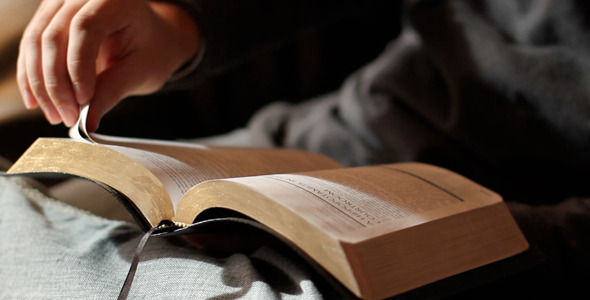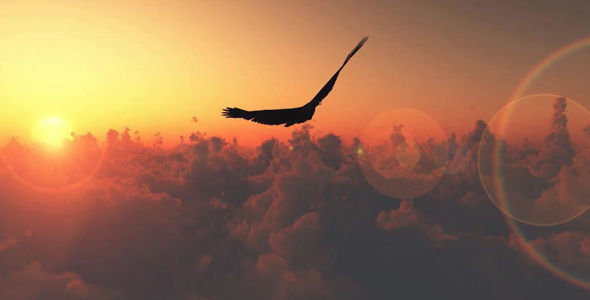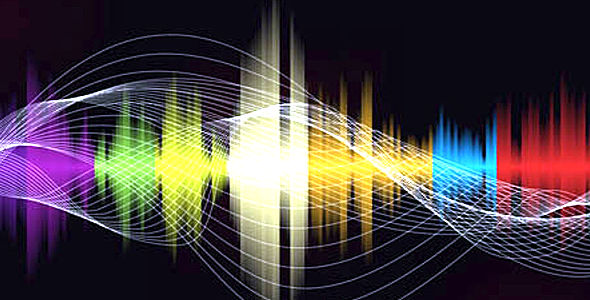FOLLOW:
The History Of Radhasoami In The United States
By Andrea Grace Diem, Ph.D.
(excerpted from ‘The Guru in America’)
The evolution of religion is directly connected to the evolution of communication technologies. To understand the limits of the latter is to also understand the limits of the former’s potential for growth. Thus all histories of religion are to some measure histories of human development, especially as it relates to the transmission of information. That this is obvious is one thing (from speech to written words to printed books to radio to television to worldwide computer networks), but that it is rarely focused on in appraising how new religions develop is quite another thing altogether (and is something which should not be neglected in any history, religious or otherwise).
The history of Radhasoami in the United States is a case in point. Why? Because in many ways the growth of Radhasoami in countries outside of India has been hitched, for better or worse, to the advancement of technology. Even within Radhasoami circles this is well known, as evidenced in the Introduction to an in-house Beas Satsang publication entitled Dawn of Light wherein the author writes that the great advances made in communications have led to the world-wide spread of shabd yoga teachings, especially in Europe and North America. [1] At each stage where there has been a technological revolution, there has been in turn an influx of new initiates to the Radhasoami path. To be sure, Radhasoami masters have not necessarily explained away such increased numbers to better telephone networks, but they have been well aware of how the evolution of the communication industry has led to new opportunities to advance the message of Sant Mat.
Equally related to this, of course, are political regimes. For example, when the Soviet Union officially banned religion, it had an amazingly chilling effect on the growth of new religions. Therefore it is not at all surprising to learn that Radhasoami had made very little headway there until the latter part of the 1980s. Today, of course, Russian society has seen a great increase in the number of new religions and new converts. Throughout the history of the United States, on the other hand, religions (including alternative ideologies) have generally prospered, perhaps due to America’s Enlightenment principles of tolerance and individualism coupled with a laissez-faire type government.
Specifically, Eastern religions have been quite successful in the United States. To fully understand the reasons for this several historical and political factors must be considered. First of all, a fertile soil for Eastern ideas was sown when Indian literary material became available to the West through the translations of nineteenth century British scholars, like Sir William Jones, Charles Wilkens and Sir Edwin Arnold. American Transcendentalists were attracted to these newly translated Indian writings and incorporated in their philosophy Eastern idealism with nature mysticism and Western individualism. A major step for Eastern religions occurred in America when Unitarians, many of whom were Transcendentalists, set up the World Parliament of Religions in 1893. Several Indian teachers, particularly Vivekananda and Dharmapala, were well received. Americans seemed to like what they heard: an appealing religious universalism, a non-ascetic orientation, and the idea that they did not have to leave their religion to appreciate or to be affiliated with Eastern thought. Shortly after the World Parliament many Indian groups began to set up shop in America, including the Vedanta Society in 1894 and the Self-Realization Fellowship in the 1920s. But the doors to foreigners did not officially open until 1965, when L.B. Johnson rescinded the immigration laws set back in the earlier part of the twentieth century. Since the United States immigration policy has dictated to a large measure the numbers of foreigners who may legally enter the country, it has in turn determined how various cultures will impact on the American melting pot. With the revocation of the immigration laws immigrants began pouring in bringing with them their religious and cultural ideas. Among the immigrants were several well-known Indian teachers such as Yogi Bhajan and Swami Bhaktivedanta Prabhupada. During this time Radhasoami related groups also began to experience an exponential growth in their followings. That the immigration laws were dramatically changed in the mid-1960s to the advantage of incoming Indians has no doubt had tremendous effect on shaping Americans’ views of things Indian. Today, naturally, almost every major city in the United States boasts of one or more Indian restaurants, which was surely not the case thirty years ago.
As we see, there are many worldly realities, like communication and politics, that spiritual movements must come to grips with if they are to expand. Keeping this important caveat in mind will allow us to ground the history of Radhasoami, and other new religions like it, in an empirical context, one which allows us to see how a spiritual message can intertwine, albeit distinctly, with a purely material medium.
Radhasoami Gurus in America
The first Radhasoami guru to visit the United States appears to be Shiv Brat Lal, one of several successors to Rai Salig Ram of Peepal Mandi, Agra. According to Dayal Yoga,
In the year 1911 A.D., Data Dayal [Shiv Brat Lal] went on a tour of Japan, America, and other foreign countries. There also he spread the Gospel ‘in search of God and discoursed on physiology of the spirit.’ He did not rest. [2]
Coincidently, it is also from Shiv Brat Lal’s lineage that the first bona fide American Radhasoami guru, Dr. Ishwar Sharma, emerged. Although Sharma was born in India, he lived in the United States for over a decade (working as a philosophy professor at several colleges and universities) and succeeded his guru, Faqir Chand (Shiv Brat Lal’s chief disciple and eventual successor), after he died in Pittsburgh, Pennsylvania in the Fall of 1981. Although much is known about Sharma’s ministry (he’s still living), there is very little information about Shiv Brat Lal’s visit to America and what impact, if any, it had on the spread of Radhasoami teachings among Americans.
Shortly after Shiv Brat Lal’s visit, Dr. Bhagat Singh Thind, an initiate of Sawan Singh of Radhasoami Satsang Beas and an offshoot guru who did not acknowledge his Beas connection, permanently settled in America and preached a mixture of Sant Mat, Radhasoami, Sikh, and Occult doctrines. He was modestly successful in his venture and gathered several hundred disciples. Bhagat Singh Thind also wrote a number of books with Radhasoami related themes, including his most famous treatise, Radiant Road to Reality.
Surprisingly, it would be another thirty-five plus years after Thind’s initial visit when a Radhasoami related guru visited America. In 1955 Kirpal Singh, founder of Ruhani Satsang and long time initiate of Sawan Singh of Radhasoami Satsang Beas, visited several cities in the United States during his first world tour. His visit, unlike his two predecessors, has been well documented and was very instrumental in spreading shabd yoga teachings throughout the country. It was also during this trip that Kirpal Singh initiated Paul Twitchell in Washington, D.C. Ten years later Twitchell formed his own group, Eckankar, which was primarily based upon the teachings of Kirpal Singh and Radhasoami. Today Eckankar is one the most successful new religions in America founded in the 1960s.
The booklet, As They Saw the Master (Delhi: Ruhani Satsang, 1956), partially documents Kirpal Singh’s tour of the United States and elsewhere. It also provides several intimate portraits of Kirpal Singh written by new initiates. Though Kirpal Singh did not attract large numbers to his lectures (in contradistinction with Vivekananda, for example), they were nevertheless well attended and his tour was quite successful in establishing a permanent infrastructure and network of satsangis.
Kirpal Singh again visited America in 1963. This trip was even more successful than his first with hundreds of people attending his lectures. George Arnsby Jones’ book, The Harvest is Rich: The Mission of Kirpal Singh, details much of Kirpal Singh’s tour. The book also graphically illuminates how the Indian guru spread his message. Concerning the Washington, D.C. leg of the trip, Jones writes:
During a twenty-seven day stay in Washington, Kirpal Singh gave a total of eighteen public talks. Some were given at private residences, others at the Friends Meeting House; The Sylvan Theatre; the Theosophical Society; the Perpetual Building; The Washington Post Building; the House of Inspiration, (Vienna, Virginia); the Wesley Theological Seminary (American University); Levering Hall (John Hopkins University); Brookmont Baptist Church; the Unitarian Church; and the Y.M.C.A. Eight further talks, of a more informal nature, were given at the residence of T.S. Khanna. A press conference held at the National Press Club was attended by representatives of five leading newspapers. . . While in Washington, Kirpal Singh made five radio broadcasts, which included a recording made for the ‘Voice of America’ in English and Hindi for retransmission in India. He also gave a broadcast on the nationwide C.B.S. network and gave complete coverage of his spiritual mission in the world. He made two appearances on television, and his message of love and hope reached an even wider audience. . . Before the Master left Washington for Philadelphia, he was invited to the Capitol and introduced to a large number of Senators and Members of the House of Representatives. Senator Kennedy, in a long talk with Kirpal Singh, welcomed the aims and ideals of the World Fellowship of Religions. [3]
Almost a decade later in 1972 Kirpal Singh made his last trip to the United States. By this time he was well known in spiritual circles and many people, especially those in their late teens and early twenties, came out to see him. This trip, which at one stop saw nearly a thousand people gather to hear Kirpal Singh, is fully documented and photographed in the publication, The Third World Tour of Kirpal Singh(Tilton: Sant Bani Press, 1974).
The first Radhasoami Satsang Beas guru to visit America was Charan Singh in 1964. Charan Singh’s trip was even better received than Kirpal Singh’s, with the Beas guru attracting consistently larger numbers in his audience. This was primarily because Radhasoami Satsang Beas is well established in India and has had roots in America since 1911. Unlike Kirpal Singh’s trip, though, Charan Singh’s tour was not advertised. The Beas guru also did not publicly present his message the way that Kirpal Singh had done in 1955 and 1963. Indeed, Charan Singh’s one and only impromptu television interview on May 28, 1964 with a news reporter in Minneapolis, Minnesota, caused a bit of a stir because it was so unusual. A verbatim transcript of the brief interview and a full account of Charan Singh’s travel to America are outlined in the book, The Master Answers Audiences in America (Beas: Radha Soami Satsang, 1966).
Whereas Kirpal Singh utilized the media (he was not adverse to taking out newspaper and magazine advertisements), Charan Singh for the most part resisted it. The reasons for this are complex and stem largely from early Radhasoami history in Agra. Perhaps the chief reason is theological: there is a long standing belief in Radhasoami that there are “marked” souls and only those who are so marked will receive initiation from the guru. Thus, according to this argument destiny, not advertising, leads souls to Radhasoami. But even in groups which do not allow any formal type of advertising, like Soami Bagh in Agra, it is perfectly acceptable to publish books and circulars. Hence, it may not be advertising, as such, that is disdained (a book is in many ways a form of advertising), but rather certain kinds. And it is here where the differences between Kirpal Singh and Charan Singh can be illuminated. It is also here that we can begin to understand the various ways that shabd yoga doctrines have been transmitted. When a guru or a group is new, and does not have an established following, it may be necessary to promote his/her (or its) teachings in ways that were previously thought to be too crass. However, when the guru or group does find a niche, he/she (or it) may then outgrow the former methods of proselytization and assume a more staid or dignified approach. Clearly Charan Singh and the Beas Satsang did not need to vigorously promote themselves. Charan Singh’s monthly satsangs at the Dera attracted tens of thousands of people and sometimes the numbers reached well over one hundred thousand. When he came to America for the first time, there were already several hundred initiates spread throughout the country. In contrast, Kirpal Singh essentially started his ministry on his own after he disputed the transference of his guru’s mantle to Jagat Singh in 1948 at the Dera. Thus when he came to America in 1955, he could not count upon Beas affiliated satsangis to show up to his lectures. Even though T. S. Khanna, Kirpal Singh’s general representative who lived in Washington, D.C., tried steadfastly to sway initiates of Sawan Singh to Kirpal Singh, only very small numbers of Beas satsangis switched over to Ruhani Satsang. Therefore, in several ways, Kirpal Singh was forging new territory when he came to America. For many Americans, he was their first introduction to shabd yoga teachings, and, as such, carried all the pros and cons that an innovative and charismatic leader brings with him.
Charan Singh made his second and last trip to the United States in 1970, six years after his first visit. Surprisingly the crowds that attended his lectures this time increased almost tenfold. No doubt there are a number of reasons for this, but one factor that seems pivotal was the baby boom generation. Large numbers of disaffected youth attended Charan Singh’s satsangs, just like they had attended the talks of a host of other gurus, including the ever popular Maharishi Mahesh Yogi. Charan Singh himself was well aware of this and commented that perhaps the youth were revolting against the hypocrisies of materialism and dogmatism.
The largest crowd to see Charan Singh was in Pasadena, California, where over fifteen hundred people attended his talk. This was a remarkable number at the time, especially since there was no public advertising allowed. That California should be the place to draw the largest crowds is not surprising. Since the early part of the twentieth century California has been a sprouting ground for alternative life styles. [5] Most Indian gurus have found their greatest success in California, including Paramahansa Yogananda of Self-Realization Fellowship, who permanently settled in southern California and died at the Biltmore Hotel in 1952.
Kirpal Singh’s and Charan Singh’s trips to America were clearly the most visible and successful of any Radhasoami related guru up until the mid-1970s. Several other Radhasoami gurus visited America before this time as well. Outstanding among these was Faqir Chand, founder of Manavta Mandir in Hoshiarpur in the Punjab. Faqir Chand made several visits to the United States, presenting informal talks, public lectures, and print/radio interviews on both the East and West Coast. Interestingly, he was also the first Radhasoami guru to die on American soil. During his fifth trip to America Faqir Chand stayed in Pittsburgh, Pennsylvania. Although he planned to fly to Los Angeles, California and present a series of talks sponsored and funded, in part, by John-Roger Hinkins of M.S.I.A., he suffered a cardiac arrest and died at the age of ninety-five. His impact has been even greater after his death, primarily due to the efforts of his successor, Dr. I. C. Sharma, who has presented Faqir’s teachings in a Westernized fashion tailored for a Christian educated audience.
Following Kirpal Singh’s death in 1974, there was a succession dispute which led to a major schism in Ruhani Satsang. Eventually several gurus emerged as claimants to Kirpal Singh’s ministry. Three of the most popular of these successors were Darshan Singh, Thakar Singh, and Ajaib Singh. All three gurus have made several trips to America.

The Power of the Word
We find in the Bible the words: ‘In the beginning was the word, and the word was God’, and we also find that the word is light, and that when that light dawned the whole creation manifested. These are not only religious verses; to the mystic or seer the deepest revelation is contained in them.

The Mysticism of Sound
Abstract sound is called sawt-e-sarmad by the Sufis; all space is filled with it. The vibrations of this sound are too fine to be either audible or visible to the material ears or eyes, since it is even difficult for the eyes to see the form and color of the ethereal vibrations on the external plane.

Sikhism
A progressive religion well ahead of its time when it was founded over 500 years ago, The Sikh religion today has a following of over 20 million people worldwide and is ranked as the worlds 5th largest religion. Sikhism preaches a message of devotion and remembrance of God at all times, truthful living, equality of mankind and denounces superstitions and blind rituals.

Naam or Word – Hari Ras
Now we come to another term, “Hari Ras” or Divine intoxication. Whoever communes with the Word, Shabd or Naam feels an exhilarating effect, too sweet and too absorbing for words. Far from being inebriating and stupefying it raises one into a state of super-consciousness and universal awareness.

Vipassana Meditation: The Soothing Divinity of Sound
The Himalayan masters of ancient India developed the “sound current” that is now known as the “divine sound.” The divine sound is the foundation used for practicing various forms of yoga—nada, sahaj, Babaji, kriya, and Sikh practices such as shabda yoga.